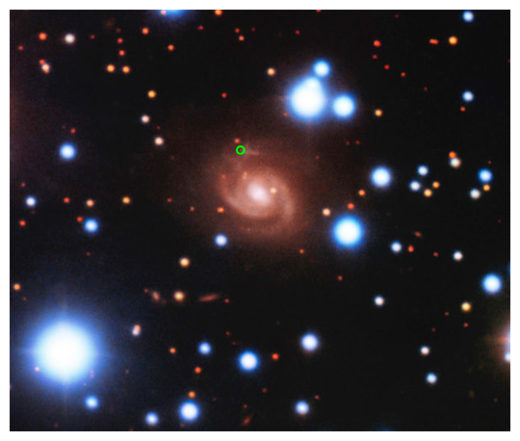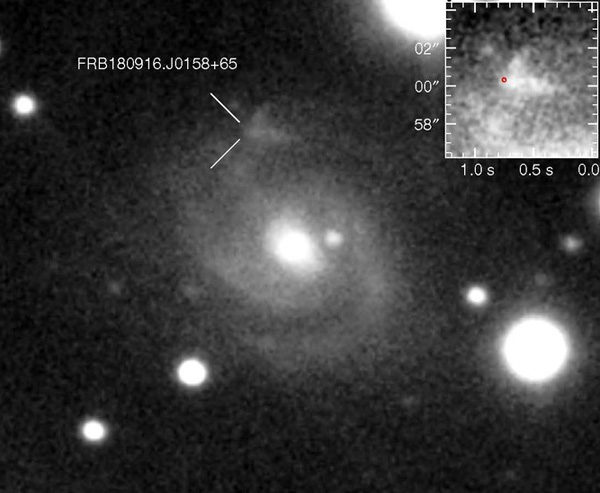
Now, Benito Marcote (JIVE, The Netherlands) announced at last week's meeting of the American Astronomical Society in Honolulu that he and his colleagues have pinned down the precise location of a fifth radio flash. The result sheds light on the environment around these still-mysterious sources.
The Canadian Hydrogen Intensity Mapping Experiment (CHIME) telescope in Canada originally discovered the radio flash, referred to as FRB 180916.J0158+65. Then, as the source continued to emit flashes, eight radio dishes that are part of the European VLBI Network (EVN) pinned down the source to the outskirts of a spiral galaxy. The astronomers used the 8-meter Gemini North telescope on Mauna Kea, Hawai'i, to image the region, finding that whatever had produced the radio flash had a nursery of newborn stars for company.
The environment around this so-called repeater is similar to the location of the first repeater: a region that's forming new stars. This contrasts with the locations of single FRB flashes, Marcote says, all which have been localized to distant massive galaxies with low star formation rates.
This latest addition to FRBs with a known locations suggests that the two types — repeating and non-repeating — have different origins. But astronomers are still far from understanding what those origins are.

This find, which was published in the January 9th Nature, was part of the CHIME telescope's first catalog of eight repeaters discovered in 2018, published in Astrophysical Journal Letters. Meanwhile, the CHIME collaboration announced on January 10th that they have discovered nine additional repeaters in 2019 observations. More astounding, though, is a footnote in the latter study, which notes that a whopping 700 FRB detections are still being analyzed and will be published in a forthcoming catalog.
Since they were first discovered, the number of known FRBs has lagged behind the multitude of theories on what they could be. Now the observations are finally beginning to surpass the theories: We're actually at the point where the huge amounts of radio data being collected by various surveys has surpassed the capabilities of eager graduate students and is being passed on to neural-network algorithms instead.
"By the end of 2020, we will have more than 1,000 FRBs, at least a few dozen that will be precisely localized, and we can answer some questions," predicts Jason Hessels (ASTRON, The Netherlands). "Or at least we'll have some new questions."



Reader Comments
to our Newsletter